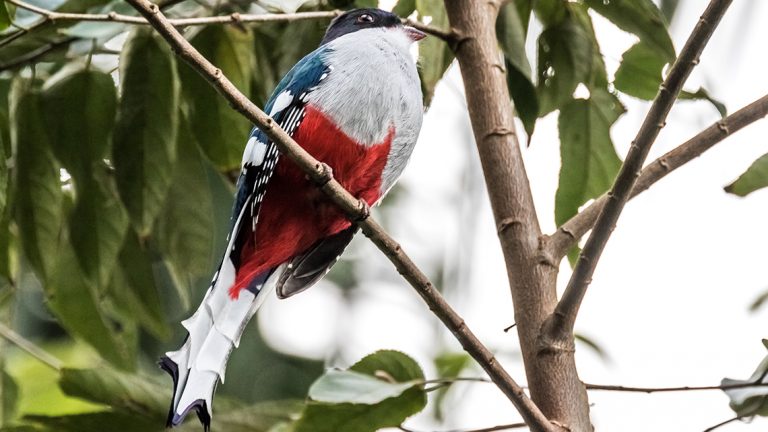If you want to follow in the steps of Colin Stafford-Johnson in his BBC documentary “Wild Cuba: A Caribbean Journey”. Read this blog post to find inspiration. See added recommendations on the places to stay, the excursions to book and the sights to see. For an adventurous Cuba holiday that puts you in touch with its rawest landscapes and most untouched wildlife ecosystems. Follow this blog’s enlightening journey. Is full of tips on how to best experience raw and wild Cuba at its most naturally vibrant and authentic.
If you’ve always dreamed of exploring the natural riches of a little-trodden island with the best-preserved ecosystems in the Caribbean. Then the journey we propose will more than satisfy your thirst for natural discovery.
By reading this blog you can follow in the footsteps of Irish cameraman. Director and wildlife cinematographer Colin Stafford Johnson as he embarked on a Cuban journey of discovery. Filming his BBC documentary “Wild Cuba: A Caribbean Journey”.
“A true wildlife wonderland”
You too can witness little-trodden landscapes, teeming underwater ecosystems. Catch sight of some of the planet’s rarest animals (endemic to Cuba only); from the smallest bird to the smallest frog, the largest iguana and the oldest aquatic species. It’s all here and all waiting to be explored in endlessly fascinating Cuba.
“Cuba: the Caribbean’s most precious natural jewel”
The largest protected area in the Caribbean – Zapata Peninsula
Stafford-Johnson starts his wild Cuba journey of discovery in the Zapata peninsula. A vast protected area, which he rightly describes as:
“The single largest protected area in the Caribbean.”
Found in Cuba’s southwestern coast , Zapata’s rich biodiversity. Which fascinates scientists and nature lovers alike and is a must-stop for bird-watchers and any other wildlife fan.
Finding the smallest bird in the world

Colin’s first quest here is to get acquainted with the smallest bird in the world. To do so he waits by a ponesí shrub, a Cuban plant loved by hummingbirds because of their sweet nectar. Then soon enough a bright-capped bee hummingbird (or zunzuncito) zooms in for a sweet libation.
“It’s hard to believe it’s a bird” – Colin Stafford-Johnson
These fascinating creatures that due to their minuscule size are easy to confuse with an insect. Unless your eye catches it in suspended motion(when sucking the nectar from a flower). They are endemic to Cuba only. And it’s just when you see it on screen flying next to its bigger cousin the zunzun, that you realize how tiny it really is.
“For the sheer beauty of it”
Spectacularly brightly-coloured with iridescent patches of emerald green and bright orange heads and necks. Spotting a zunzuncito is a sight not many forget, but you must be vigilant and have patience. Because if you catch in flight with their vigorous flapping of the wings. You might not see much more than a tiny blur. To truly observe it you have to watch it feed. Colin lingers and watches a female hard at work building her eggcup-sized nest, (which will shelter the world’s smallest eggs). And camouflaging it with minute bits of Lycium. In a way that to the human eye, looks like a Gaudiesque piece of art!
The largest iguanas in the Caribbean
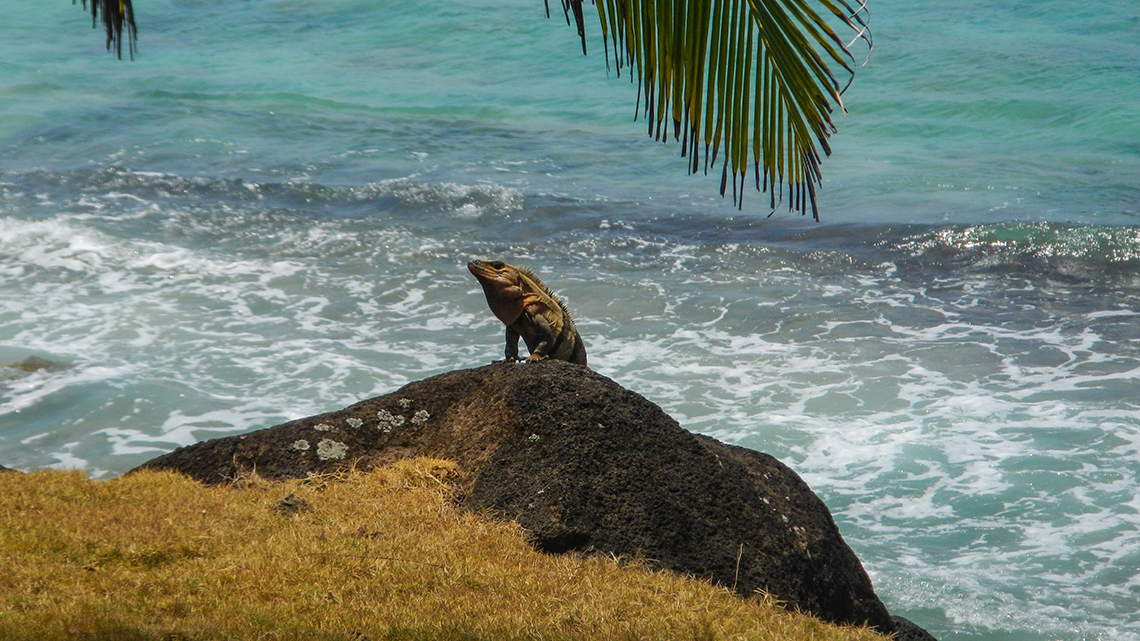
On a beautifully isolated beach, our documentarist meets a colony of Cuban rock iguanas. The largest species of iguanas in the West Indies and one of the largest in the world. These magnificent animals whose origins date back to 300 million years ago (making it one of Cuba’s most fascinating living dinosaurs). Along with crocodiles, sharks and the rare “manjuari” – more on this one later.
With a funny wobbly walk and a decidedly laissez-faire attitude, they only spring into action once the mating season starts. This is only for a short time, the time required to establish who’s boss.
Gardens full of sharks
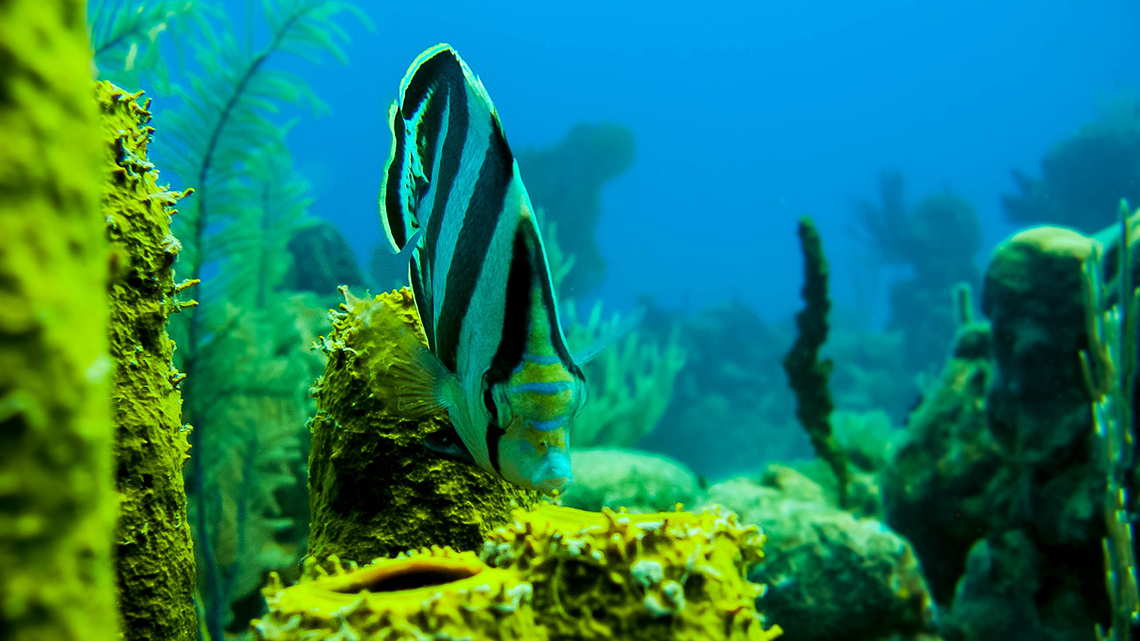
In Jardines de la Reina things remain pretty much as they have been for millions of years. This protected archipelago lying off Cuba’s southern coast has been kept pristine in a truly exceptional way . No tourist developments are allowed here. As Colin so eloquently puts it:
“150 kilometres of islands, coral reefs and mangrove swamps have formed one of the greatest barrier systems on earth.”
Diving here you’ll find corals that have survived almost nowhere else in the Caribbean. Like Elkhorn (among the very first to die under the impact of human contact). Pulsating with life in the form of over 4,000 different species. It’s a beautiful underworld and microcosm of what the oceans used to be like centuries ago.
“A marine wonderland”
In its waters, a healthy population of sharks thrive and diving with shark experiences are offered. Jardines de la Reina is sharks’ last great refuge in the Caribbean and here they truly reign like nowhere else.
Fluffy giant rodents
As he walks on the sands of a virgin beach Colin comes across a hutia. A big furry rodent endemic to Cuba, locally known as “jutia”. Also encountered by Joanna Lumley in her last trip to Cuba, who seems to be “doing just fine” in his natural habitat. Finding enough food and sustenance in this part of Cuba. Even when the numbers of certain species have dwindled.
Havana’s mixed heritage

Colin’s next brief stop is Cuba’s capital of Havana where he ponders on the mixed identity of Cuban people. The vibrant culture, the African influences. And what the slave ships brought along with human lives: African geckos, “stalking Havana’s city streets” at night. Then he reflects on how Cuba’s holiday industry had plans to boost cruise ships landing in Havana. Which will significantly increase the number of tourist arrivals. And how such a move should be handled carefully. In order to avoid putting further strain on the island’s wild treasures.
Back to Zapata Nature
After his brief stint in Havana, Colin goes back to the wildlands. Returning to Zapata, where, after three weeks, the zunzuncito’s eggs have hatched. Growing at a rapid pace until, 18 days later, their flight feathers have developed enough to allow them to finally fly the nest. The scene is really special because of how endangered these species are, only now found in this part of Cuba.
One of the rarest birds in the world
Zapata is also the last stronghold of the Fernandina’s flicker. One of the world’s most endangered bird species with critically low numbers in the island. And one of its remaining safe havens being Zapata’s forested lands. Here avid birdwatchers can get a chance to see one of the planet’s rarest birds, found only in Cuba.
Bay of Pig’s colourful Crab Invasion
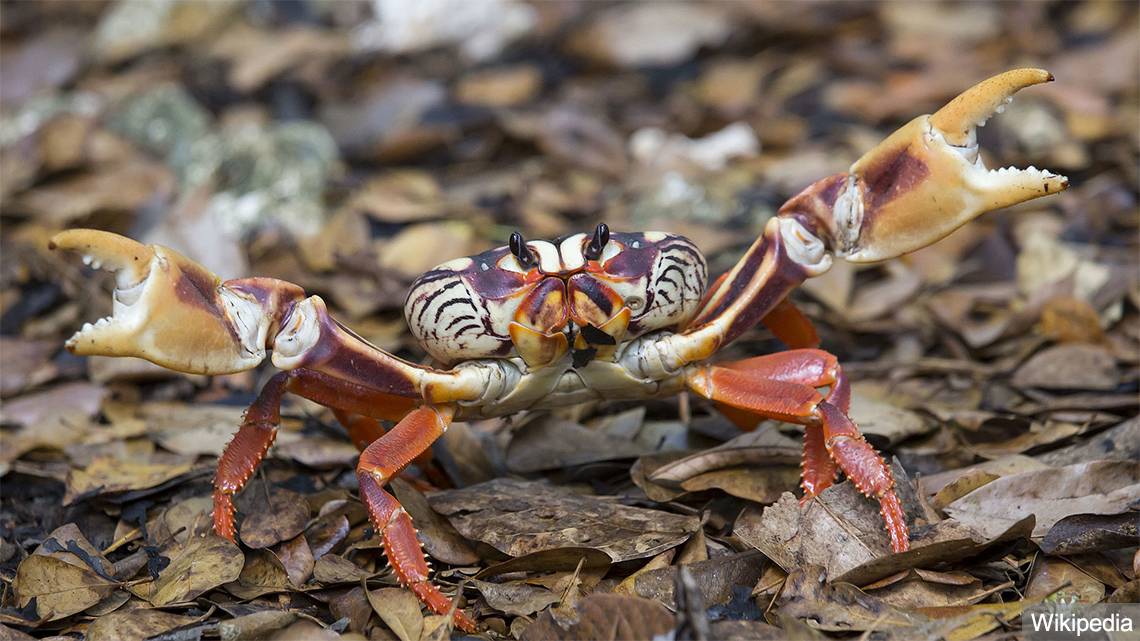
Just a few miles east of Zapata, there is the infamous Bay of Pigs. It has a claim to fame that few know about. It has nothing to do with politics or the Cold War era. But exclusively concerns the unique evolution of Cuba’s wondrous ecosystem.
Witnessing one of the greatest wildlife migrations
The Cuban red land crab (Gecarcinus ruricola) is a nocturnal creature, so you wouldn’t spot it. Unless you happened to land here between the months of March and July. With April being the peak month (in case you want to witness it during a Cuba holiday). Right in the midst mating season. This is the time when these otherwise reclusive crabs throw caution to the wind and females carrying eggs. They make the perilous journey to the sea where must carefully deposit them. Exactly at the right time for them to spawn.
As can be seen in the documentary or in above clip, millions of red, black and yellow land crabs flood the Cuban road. That stands between their natural habitat in the forest and the sea every year. Thousands die on their way, crushed under the weight of vehicles. But many more make it to their final destination and accomplish their mission.
The red crab migration is a spectacular, awe-inspiring sight to behold. Bittersweet for the crabs that don’t make it but nevertheless an authentic experience no one forgets.
Cuban king of the swamps
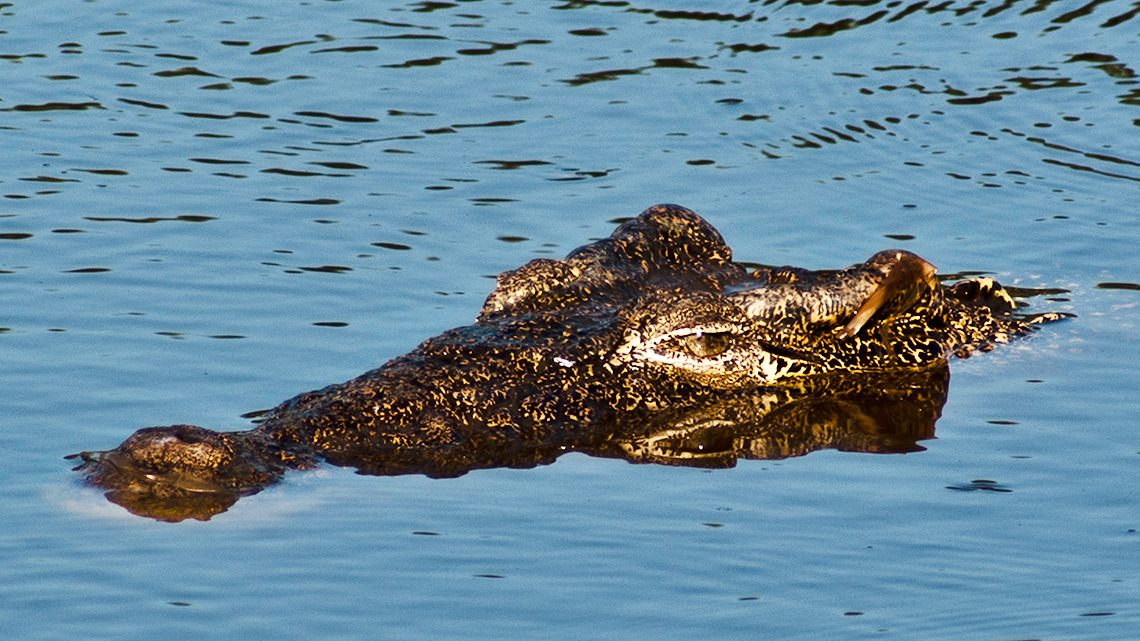
The giant American crocodile and the smaller Cuban crocodile are the true kings of the Zapata swamps. Where they remain firmly at the top of the food chain. If you want to get a closer look, the national park offers guided tours around the protected areas. And you can visit the crocodile farm in Guamá.
Wandering further for deeper nature therapy
There is one wondrous place in Cuba, home to cascading waterfalls and therapeutically beautiful landscapes, that doesn’t feature in Stafford-Johnson’s Wild Cuba documentary. But that we nevertheless recommend. We’re talking about the Escambray mountain range, majestically rising. Only minutes away from the city of Trinidad and found two hours east of the Zapata peninsula. It’s the perfect midway stop-off point on Stafford-Johnson’s journey before he continues eastward-bound towards Guantanamo.
Once in the Escambray region we recommend staying in Finca Lima for a full natural immersion into Cuba’s wildest way of life. If you want to feel like a Cuban cowboy for a while. Soak up the natural pace of life in this region, a stop-off here is a must! Following and dining on locally-grown produce will be part of the experience. As will also be discovering scenic trails, cave systems, tranquil pools, thriving birdlife and hillside treks full of exciting wildlife.
Guantanamo’s Humboldt National Park

For the next part of his trip, Colin heads east, all the way to Cuba’s easternmost tip in the province of Guantanamo where he meets one of the world’s most fascinating little creatures.
The world’s most colourful snail
Vibrantly coloured polymitas are the delight and pride of Cuban biologists who’ve fought hard to preserve this delicate subspecies. Their brightly coloured shells in varying spiralling patterns make them look almost hand-painted. It’s precisely their attractive shells that put them in danger with their highly collectable appeal and illegal trade that goes as far as Japan. In Cuba though, they have nothing to fear anymore as numerous awareness campaigns nationwide have ensured they remain well looked after in a protected national park under strict monitoring and supervision.
Batty overload
Over 26 different types of bats call Cuba their home with seven of them found nowhere else in the world, like the Cuban flower bat. Which Colin gets to observe as they fly about “socialising” in their cave after sunset and minutes before they make their exit to feed.
Lurking in the background are Cuban boas (locally known as “majá de Santa María”). Waiting the right time to strike and catch their meal of the week in flight. They have poor sight (much as the bats do) so they often miss but sooner or later, as the narrator says, one unlucky bat will be caught in its jaws. This tree snake is the largest of Cuban snakes. They can measure up to 6 metres long, is an endemic species with no known subspecies. The largest snake in the Antilles is a non-venomous predator and highly efficient hunting machine.
From Cayo Largo to Viñales
The second part of your Wild Cuba voyage following in the steps of the BBC journalist will take you from Cuba’s eastern tip to one of Cuba’s southern offshore islands – the wondrously pristine Cayo Largo.
Cayo Largo – one of the last safe nesting places for green sea turtles
Every July green turtles come to Cuban shores to lay their eggs. They will wander around the Atlantic Sea and reach foreign shores but they all are born here. They are Cuban turtles and they always return to ensure their offspring are born in the same homeland. This “heritage” that they pass through generations on was witnessed by Colin. During a stormy night when a green turtle mother fought her way past the tide line in the sands to safely deposit and cover her eggs.
Cayo Largo’s turtle hatchery
If you are lucky enough to book yourself an idyllic beach holiday in Cayo Largo you can visit the key’s very small town center. Where you’ll find the “tortuguero”, a turtle hatchery where experienced locals look after the green sea turtles nesting sites. And care for wounded adults or old turtles in large aquariums. Operating as both, a nursery and sea turtle rescue centre for around 2 CUC you can learn about their efforts. Perhaps (if in season and in luck) hold a baby sea turtle and contribute to the preservation of the species.
Isla de la Juventud
In the pristine forests of Isla de la Juventud, the second biggest island in the Cuban archipelago, you find feathery winged creatures. That continue to thrive thanks to a protected ecosystem that has changed little throughout the years.
Woodpecker heaven
Cuban green woodpeckers and West Indian woodpeckers are a delight to watch. Especially in spring, as you see new parents hurrying around to feed their demanding hatchlings crying for their attention. As they stretch out their little heads in a rather comical way that reminds us of a cuckoo clock.
In the documentary you also witness the cheekiness of the West Indian woodpecker trying to raid another the Cuban green woodpecker’s nesting hole. He does everything possible to avoid the hard work of carving out its own hole, a task he ends up needing to do.
Cenotes and living fossils
The camera goes inside a vertical underwater cave of glistening beauty. On the way to find Cuba’s (and the world’s) rarest and oldest creature of all – the ancient “manjuarí” or Cuban gar. It’s here, in this part of Cuba where this odd-looking fish (Atractosteus tristoechus) of Paleozoic origins continues to inhabit rivers and brackish waters.
The wonder of Vinales’ valleys and green karstic landscapes

Over the last few years, the popularity of Viñales has sky-rocketed among international tourists, it really took off during Obama’s rapprochement years, being one of the fastest-growing destinations in high demand by American visitors. And it’s little wonder why, as the documentary shows, it’s one of Cuba’s most unique places.
The greenness of the Vinales Valley is littered with “mogotes”, giant flat-topped limestone rocks a paradise for rock climbing aficionados.Thriving with vegetation and sustaining a delicate ecosystem.
“Forested islands in a sea of agriculture”
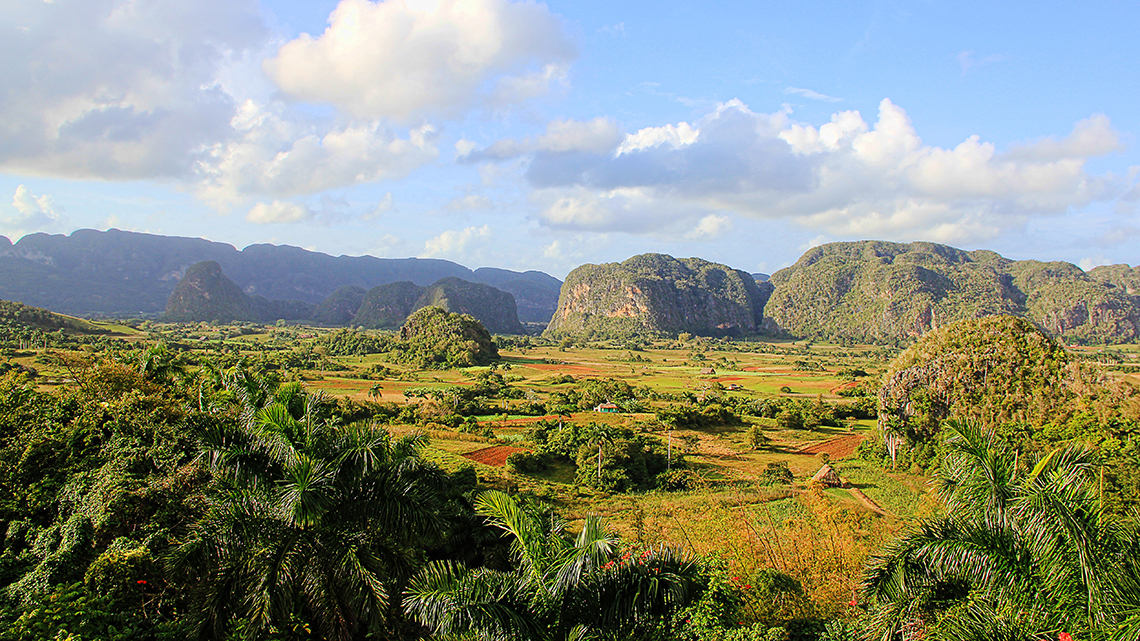
In Vinales it’s all about low-impact agriculture done the traditional way with maximum respect to the local environment. Fields with crops, ploughed land and tended fields all the way up to the mogotes so the only way to see wild animals in this area in their natural habitat is by exploring the mogotes themselves.
Getting close to the mogotes, as Colin did, will reveal a beautiful world of beautiful rock formations, caves, crevices and waterfalls.
Giant karstic fortresses
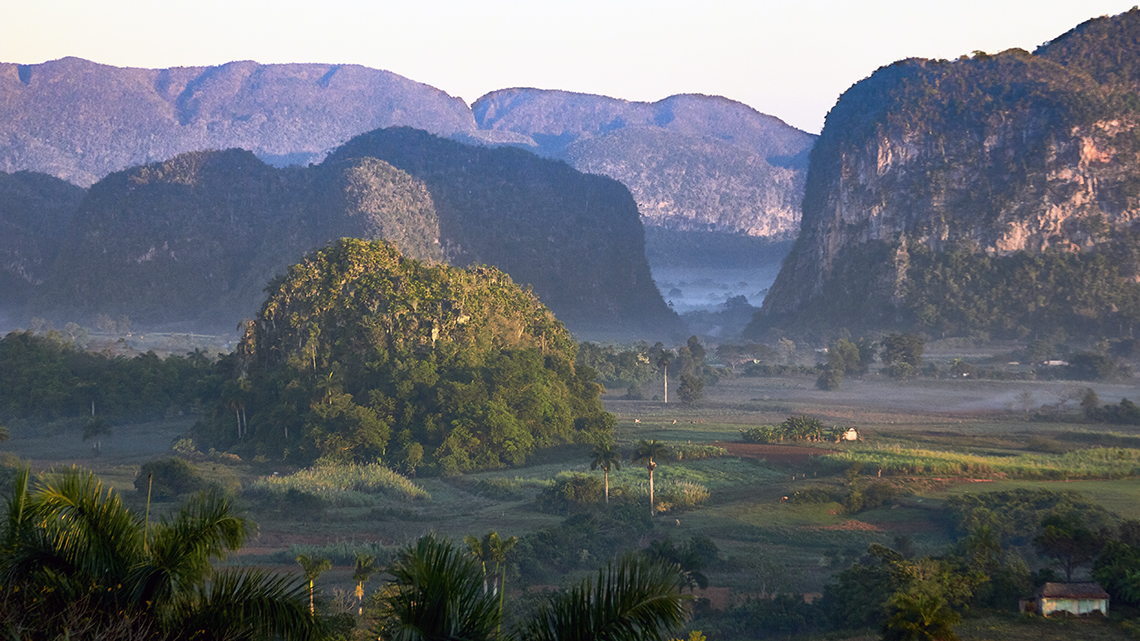
The limestone cliffs are jagged and very difficult to climb and access, making it all the more protective for the animal species that thrive here. One other animal that can be spotted by approaching the mogotes without having to climb up them is the cliff anole or west Cuban anole (Anolis bartschi), an impressive and colourful lizard perfectly adapted to vertical life in the cliffs. In the documentary, we witness a non-aggressive dance-off between two male anoles and watch in wonder as they engage in formidable acrobatics and leaps.
Hidden caves and long-tongued bats
In the documentary we see Colin entering a flooded cave inside a “mogote” to reveal the creatures that call this their home. There he shows us a Cuban flower bat, which belong to the family of long-tongued bats and who feed on the nectar of hibiscus flowers at night. Seeing these nocturnal creatures in daylight is unlikely but with the aid of a torch, you too can access one of Viñales’ haunting caves and spot them sleeping. Tours into bat caves are available daily with knowledgeable English-speaking guides.
World’s smallest frogs
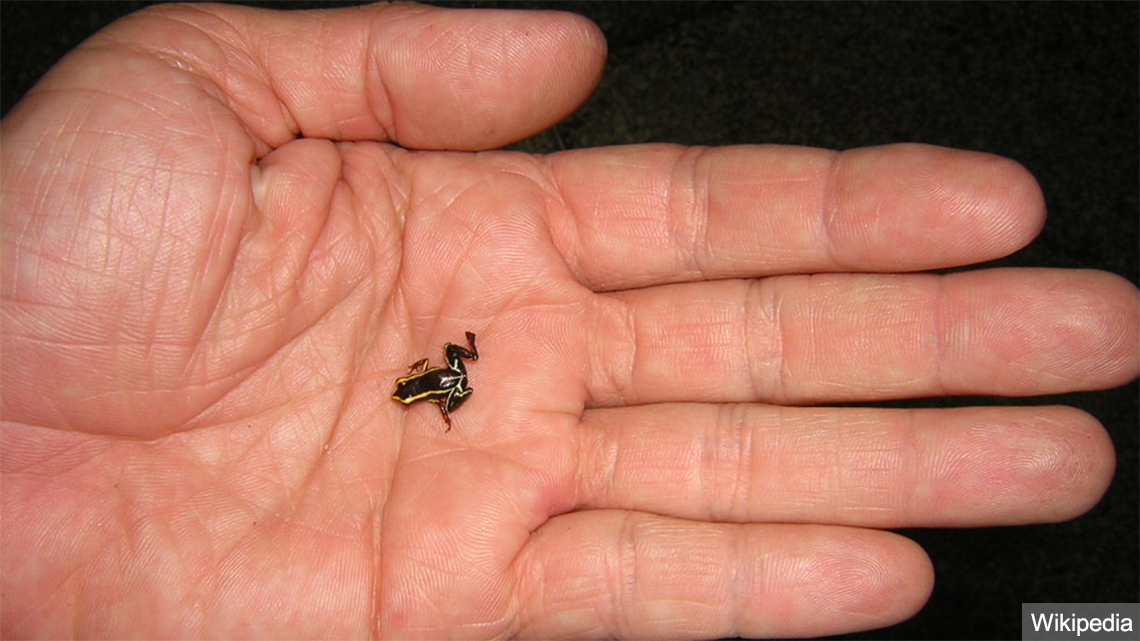
Catching sight of the Cuban “ranita” (Monte Iberia eleuth), the smallest frog in the Northern Hemisphere and the third smallest in the world, is an adventure and rare privilege in itself. A critically endangered species discovered around 25 years ago, much remains unknown regarding its mating rituals, breeding seasons and feeding habits, so it is truly one of nature’s last mysteries.
Less than the size of a fingernail, ranitas are really tiny creatures, barely measuring 10 millimetres and managing to look cute and mesmerising at the same time. You’ll find them in gullies, but you’d better ask around if you’re really interested in seeing one during your Cuba holiday adventure.
Can’t make it to Vinales?
If you’re based in Havana during most of your Cuba holiday and can’t afford to go far on excursions to the island’s wildest protected natural parks (don’t underestimate Cuba’s size!), there are options to explore Cuba’s wildlife without wandering off too far from the capital.

One of them is Finca Vista Hermosa, an organic farm offering a rural experience just a stone’s throw from the Cuban capital, where you’ll get to learn about sustainable cattle-rearing and crop-harvesting firsthand and dine on fresh locally grown produce. You’ll also get to bask in sweeping countryside views all around.
Alternatively, Finca Tungasuk is a natural haven in which to taste Cuba’s “guajiro” way of life, run by a family that gives back to the local community and passes on their sustainable practices to guests as well as their delicious farm-to-table food (both owners are chefs).
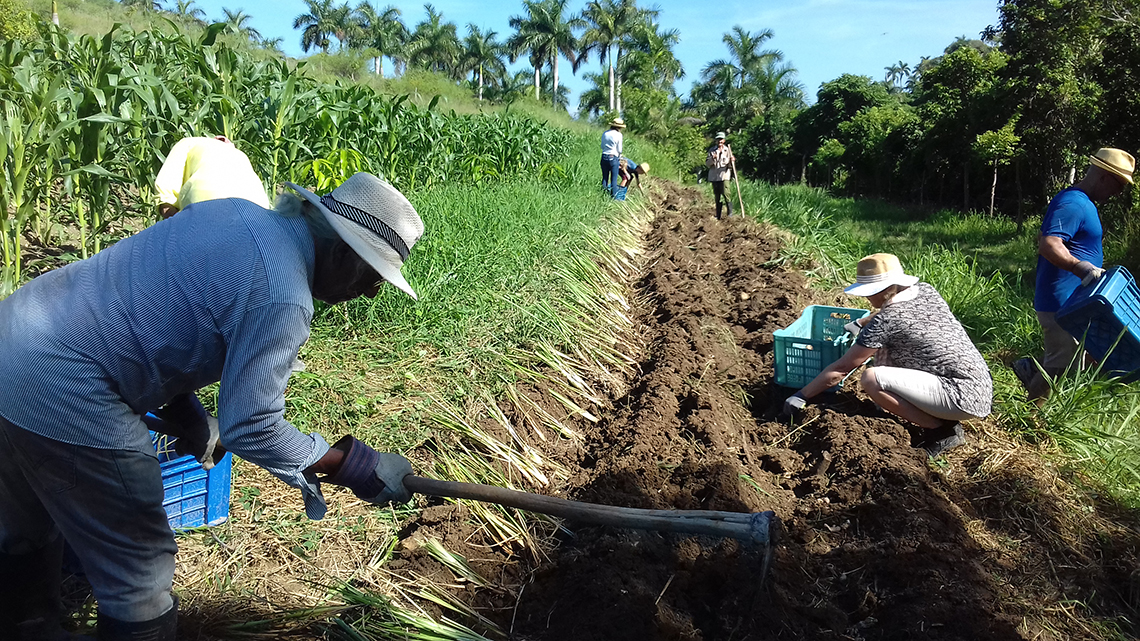
There’s more than one way to experience wild Cuba, you can go for the wildest, most remote experiences or feel part of the Cuban country way of life by mingling with local farmers and learning from their almost hypnotic daily routines, in perfect harmony with nature and the surrounding wildlife.
For more information on nature and adventure holidays in Cuba visit our website Wild Cuba or Contact to enquiries@wildcuba.com.
